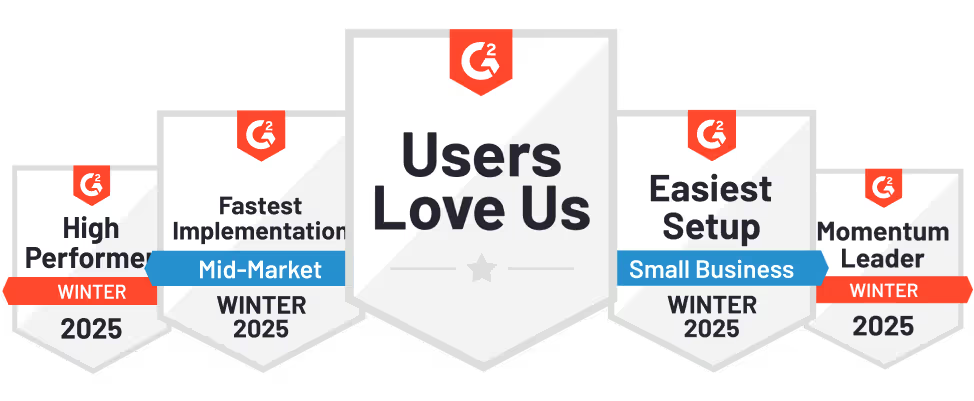LinkedIn conversion tracking isn't as straightforward as it might seem. While other platforms like Google Ads follow a relatively simple path from click to conversion, LinkedIn's B2B nature makes things a bit more complicated. Let's break down why this matters and how to get it right.
TL;DR
- LinkedIn conversion tracking is more complex than Google Ads due to multi-session, multi-channel B2B buyer journeys.
- Traditional tools often miss connections between website interactions and CRM data, leaving blind spots.
- Effective tracking requires capturing website and CRM events, retaining LinkedIn click IDs, and connecting offline conversions.
- Factors’ AdPilot bridges data gaps, providing a complete view of LinkedIn campaign performance for better optimization and ROI.
Also, read optimizing LinkedIn ads targeting for B2B audience by focusing on intent signals.
Understanding LinkedIn Campaign Types
First, let’s break down the two main ways people engage with your LinkedIn ads:
- Lead generation campaigns where visitors fill out a form directly on your website
- Website visit campaigns where users click an ad and engage with your content
Both seem simple enough on the surface, but there's more to the story.
The Click ID Challenge
When someone clicks on your LinkedIn ad, a LinkedIn Insight Tag (similar to Google's GCLID) is generated. This unique identifier helps track what happens after the click. But here's where things get interesting - and challenging.
Unlike Google Ads, where most conversions happen directly on your website after a click, LinkedIn conversions often occur through multiple channels and over longer periods. This creates some unique tracking challenges.
The Multi-Session Reality
Consider how B2B buyers typically behave. They might:
- Click your ad and browse your website briefly
- Leave without taking action
- Return days later to check out your pricing page
- Finally convert through a completely different channel
Traditional tracking systems often miss these complex journeys because they only look at single-session interactions. To get the full picture, you need a way to track and retain the LinkedIn conversion identifier across multiple sessions.
Online vs. Offline Conversion Tracking
Here's another challenge: LinkedIn conversion tracking needs to combine both website data and CRM data. Most tools only handle one or the other:
- LinkedIn Insight Tag tracks website interactions
- Zapier handles CRM events but ignores website data
This split creates a significant blind spot. You either lose visibility into website interactions or miss valuable CRM conversions, making it hard to track the full buyer journey effectively.
The B2B Conversion Difference
Perhaps the biggest misconception about LinkedIn conversion tracking is assuming it works like Google Ads. On Google, the conversion path is typically linear: click, visit, and fill out a form. LinkedIn, however, operates differently because it’s primarily an Account-Based Marketing (ABM) platform.
Your LinkedIn ad might influence conversions that happen through various channels:
- An SDR email gets a response because the prospect recognizes your brand from LinkedIn ads
- A sales call goes well because the prospect has been seeing your content
- A prospect engages with your website over multiple sessions before reaching out
These ‘indirect’ conversions are just as valuable as direct form submissions – maybe even more so. But they're harder to track.
Sending the Right Signals
To make LinkedIn's bidding engine work for you, you need to feed it comprehensive conversion data. This means:
- Capturing website interactions across multiple sessions
- Tracking CRM events and offline conversions
- Connecting everything back to the original LinkedIn click ID when possible
- Using email and company data for matching when click IDs aren't available
By feeding LinkedIn’s system with richer data, you improve its ability to optimize campaigns for better performance.
Making It All Work Together with Factors
The key to successful LinkedIn conversion tracking is having a system that can:
- Track both website and CRM conversions
- Retain click IDs across multiple sessions
- Connect offline conversions back to LinkedIn campaigns
- Handle various types of conversion events
This is where Factors’ AdPilot suite steps in. We bridge the gap between your data sources, stitching together website and CRM data to provide a complete view of your LinkedIn campaign performance. With Factors, you’ll see exactly how your LinkedIn conversions happen, enabling smarter optimization and better results.
The Bottom Line
Effective LinkedIn conversion tracking requires thinking beyond simple click-to-convert scenarios. By understanding and properly tracking the complex B2B buyer journey, you can:
- Get more accurate campaign performance data
- Help LinkedIn's algorithms optimize for your actual business outcomes
- Prove the real ROI of your LinkedIn advertising efforts
Remember, in the B2B world, conversions rarely follow a straight line. Your tracking solution needs to be as sophisticated as your buyers' journey.



